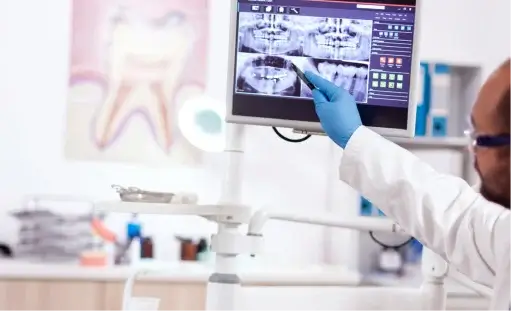
Wise people see everything.
Pola Negri
The deeper inside the forest, the darker it gets….this definitely doesn’t describe us. We can see everything because radiological examinations play an important part in dental diagnostics. This serious sounding name simply means an X-ray, yet a new dimension of an ordinary X-ray.
In our Clinic roentgen films went out of date. Now we’re closer to perfection. We use state-of-the-art digital programmes for taking dental radiographs by means of digital radiography techniques (the image of the examined object is obtained not on a roentgen film but on a computer screen), which decrease the radiation dose up to 9 times in comparison with traditional X-rays.
This is not the end of our novelties and innovations. Digital software connected to the dental panoramic radiograph and other radiographic devices allows for the display of more details on the screen, as well as for the image to be viewed in 3D. Thanks to X-ray diagnostics nothing will escape the dentist’s attention.
Success in dental treatment is ensured by the experience and knowledge of the dentist supported by the possibilities provided by modern diagnostic tools.
Our X-ray lab offers:
- panoramic x-rays,
- dental X-rays,
- sinus X-rays,
- temporomandibular joint X-rays and
- teleroentgenographic images required for orthodontic treatment.
And this means that nothing human is…invisible to us.
Our system of X-ray diagnostics includes not only an X-ray laboratory, but also radiographic devices that make it possible to produce images in surgeries without leaving the dentist’s chair.
Modern IT solutions make it possible to examine previously taken images directly in front of the patient and during treatment. They also enable the images to be processed for diagnostic and documentation purposes.